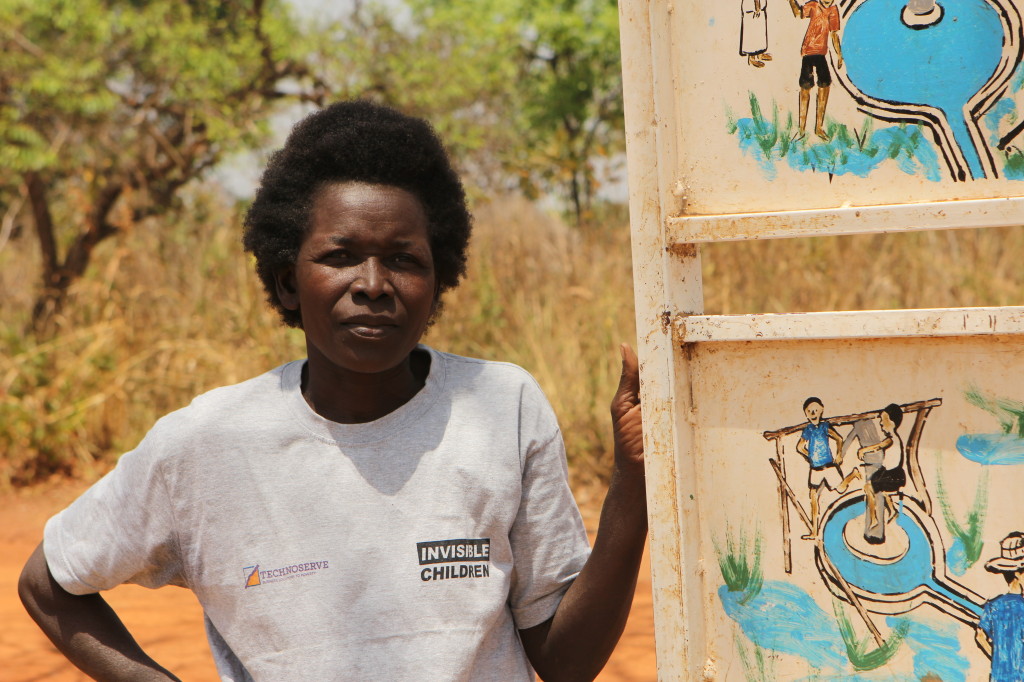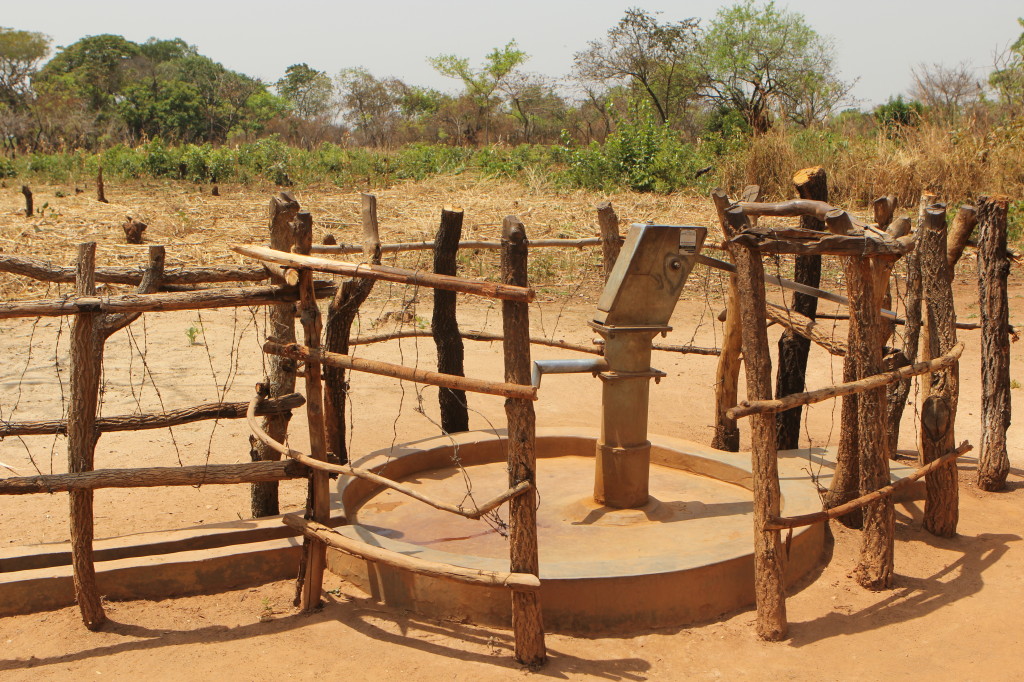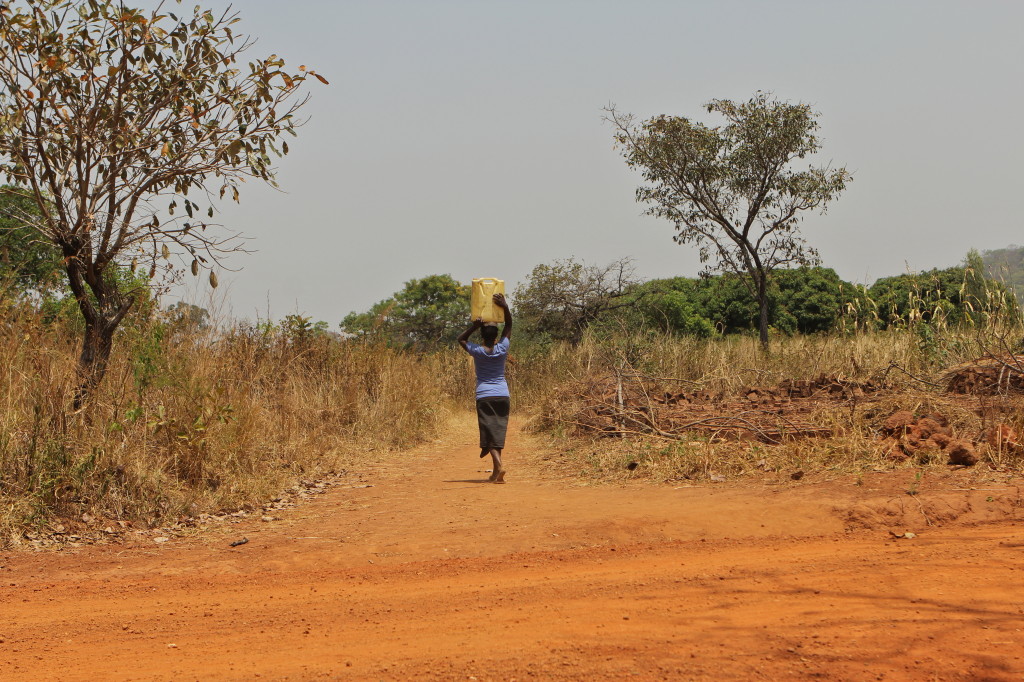A small boy ambled up the road carrying two yellow jerry cans. He approached a nearby borehole, plopping down his empty containers under the faucet. A familiar creaking sound filled the area as he began to pump, but within seconds, it was overtaken by clean water rushing into the jugs.
Besides this young boy’s visit, the borehole seemed quiet. According to Lamwaka Beronika, this was because it was mid-day. Many community members were home working on their gardens. Come in the morning, she explained, it would be busy.

Lamwaka Beronika stands near a sign at the local borehole that depicts how to protect a water source.
Beronika is the treasurer for the Water Usage Committee in her community in Lakwana sub-county in northern Uganda. The borehole she helps manage serves 20 households, providing safe and convenient access to clean water. Previously, the community fetched water from a stream that was likely contaminated and located a significant distance away from their homes.
“Children would complain of a lot of stomach problems. Our community realized it was probably because of the water source,” she said, explaining that a local health team provided tablets to purify the water, but it was not enough to make it fully safe and drinkable.
Beyond improving health, access to a safe water point allows families to spend less time fetching water and more time focusing on income generating activities and household priorities. In her community, each household contributes 1,000 Ugandan shillings per month to Beronika, which is invested in maintenance.
“The money is used for repairing,” Beronika said. “In case of breakage, we talk to the pump mechanic in the sub-county.”
The fact that the community becomes responsible for protecting the water source on their own is something Invisible Children is particularly proud of. Invisible Children sponsors training initiatives and helps to identify community members to share best practices with others and create linkages with local governments (when it comes to borehole maintenance). These greatly increase each community’s capacity to manage their WASH resources and ensure sustainable recovery efforts in the region.
Since its launch in 2010, ICU’s WASH program has drilled 20 boreholes with the help of charity:water and International Lifeline Fund and 12 more boreholes through our partnership with TechnoServe. Communities are identified based on their need for a safe water point as well as the fact that they are home to members of IC’s Village Savings & Loan Associations (VSLA) and Functional Adult Literacy (FAL) groups.
It is difficult to accurately gauge the number of people these boreholes reach, but the fact that they serve growing communities brings our estimate to 5,000+ people. We find it important to remember that those who use the boreholes are more than just numbers. They are men, women and children. Local leaders, farmers, teachers, parents, students and more.
“The water is near. Even if you are tired you are able to get the water. Even if you are sick you can get water,” Ester Ayoo, a farmer and member of one of Invisible Children Uganda’s VSLA groups, said, relieved that she now knows exactly where water for herself, her children and her community will come from.


Think people should hear about this?